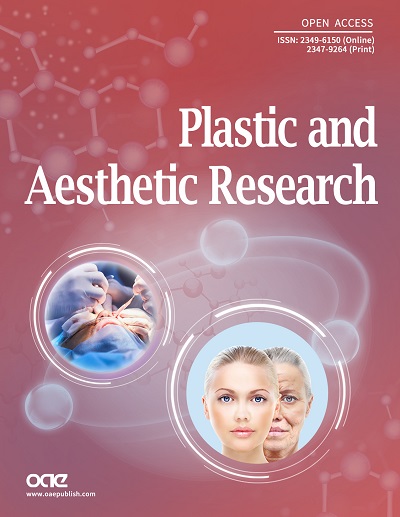Comment on “Breast cancer-related lymphedema: quality of life after lymph node transfer”
As plastic surgeons, improvements in quality of life are often the goal of our labor. As the vascularized lymph node transfer (VLNT) procedure continues to evolve to become the surgical solution for lymphedema, proving the efficacy not only as a technique, but equally as important, its impact on quality of life is pivotal. De Brucker et al.[1] elegantly demonstrates quality improvements during a 29-month postoperative duration through a validated survey (Upper Limb Lymphedema-27 Questionnaire).
Although I largely agree with the results and the study design, I speculate recall bias may be high. In this study, patients received 2 Upper Limb Lymphedema-27 Questionnaires postoperatively. Though the surveys were identical, one was to be completed based on the patients’ pre-operative status (a duration of up to 5 years previously). In addition, 22 patients of the 25 patients underwent simultaneous procedures (DIEP & lymph node transfer), combining the risk, morbidity and ultimately the patient’s experience of 2 separate procedures. This may have implications in recall bias because of the resultant limitation when comparing seemingly identical procedures. Though it is certainly reasonable to perform lymph node transfer simultaneously as part of breast reconstruction, when attempting to study the experiential effect of lymph node transfer in situ, it’s difficult to delineate.
In my experience, breast reconstruction is an integral component of patients’ wellbeing. With the prevalence of breast cancer-related lymphedema up to 49%,[2] it is critical we seek a surgical solution. As the field of lymph node transfer continues to mature your study is the first to demonstrate an improvement in quality of life via a validated survey and furthermore sets the foundation that VLNT improves wellbeing and functionality in this patient population.
Financial support and sponsorship
None.
Conflicts of interest
There are no conflicts of interest.
Patient consent
Not involved.
Ethics approval
Not involved.
REFERENCES
1. De Brucker B, Zeltzer A, Seidenstuecker K, Hendrickx B, Adriaenssens N, Hamdi M. Breast cancer-related lymphedema: quality of life after lymph node transfer. Plast Reconstr Surg 2016;137:1673-80.
Cite This Article
How to Cite
Ashraf, A. Comment on “Breast cancer-related lymphedema: quality of life after lymph node transfer”. Plast. Aesthet. Res. 2016, 3, 320-1. http://dx.doi.org/10.20517/2347-9264.2016.71
Download Citation
Export Citation File:
Type of Import
Tips on Downloading Citation
Citation Manager File Format
Type of Import
Direct Import: When the Direct Import option is selected (the default state), a dialogue box will give you the option to Save or Open the downloaded citation data. Choosing Open will either launch your citation manager or give you a choice of applications with which to use the metadata. The Save option saves the file locally for later use.
Indirect Import: When the Indirect Import option is selected, the metadata is displayed and may be copied and pasted as needed.
About This Article
Copyright
Data & Comments
Data















Comments
Comments must be written in English. Spam, offensive content, impersonation, and private information will not be permitted. If any comment is reported and identified as inappropriate content by OAE staff, the comment will be removed without notice. If you have any queries or need any help, please contact us at support@oaepublish.com.